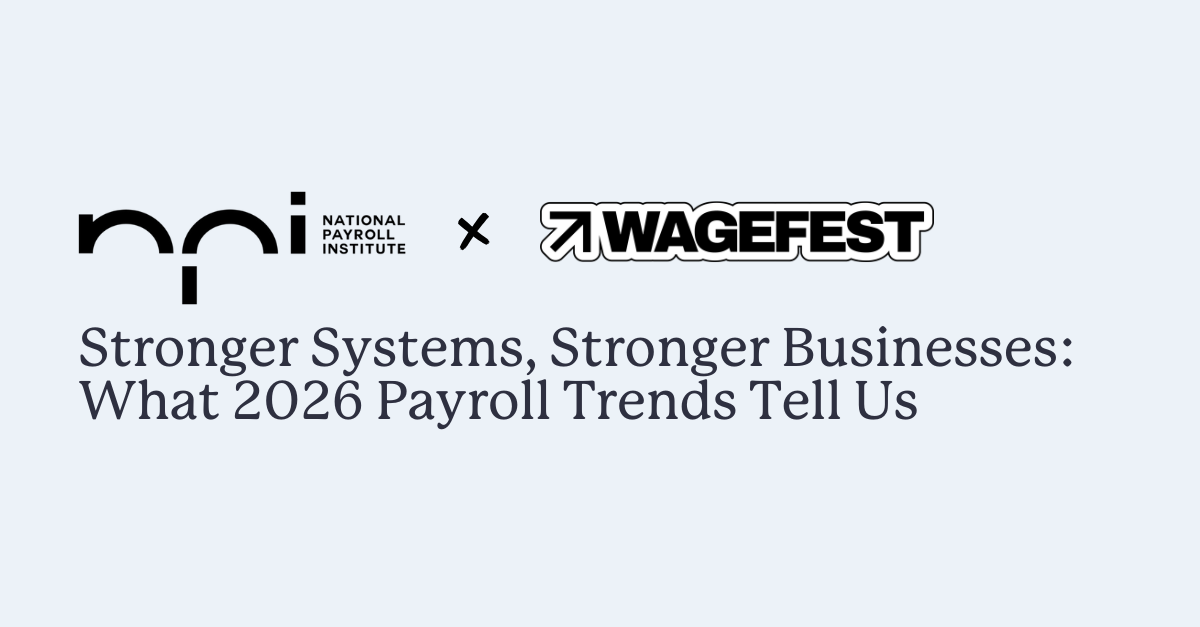Become an insider!
Get our latest payroll and small business articles sent straight to your inbox.
What if one of your most underutilized advisory tools was already right at your fingertips?
In our recent webinar, Leveraging Payroll Data for Smarter Financial Decisions, we explored how Canadian bookkeepers and accountants can tap into payroll data to deepen their advisory role, drive better business decisions, and elevate the value they deliver to small business clients.
If you didn’t get a chance to join us live — don’t worry. Here’s a summary with some of the key insights we covered and be sure to check out the full recording.
A Strategic Shift for Bookkeepers and Accountants
Payroll is typically seen as a compliance necessity — a task that must be completed accurately and on time. But what if we reimagined payroll data not just as an operational output, but as a source of powerful business intelligence?
That’s the shift we explored.
Payroll data reveals what’s happening in real time: who’s working, how much they’re working, where costs are concentrated, and how those costs are trending. This visibility supports smarter decisions around cash flow, hiring, compensation, and growth.
And because payroll runs on a regular cadence (weekly, biweekly, or monthly) it naturally creates consistent touchpoints with clients. These moments aren’t just administrative; they’re opportunities to have more strategic conversations and proactively guide business decisions.
Key takeaway? Your payroll software isn’t just a tool — it’s a strategic asset. Use it to anchor client conversations to make the shift from transactional service provider to trusted advisor.
Spotting Payroll Trends That Matter — and Acting on Them
Payroll holds a wealth of untapped value. When analyzed properly, it offers real-time insight into operations, revealing trends and red flags long before they show up on a financial statement.
During the session, we discussed how advisors can use payroll data to:
- Track key KPIs beyond gross pay and deductions
- Identify red flags like escalating overtime or fluctuating hours
- Translate data into actionable insights that align with business goals
We shared real-world examples of how payroll insights can inform decisions such as:
- When to hire — or delay hiring
- How and when to adjust compensation models
- How to forecast payroll obligations more accurately
- How to catch early signs of cash flow stress
If you’re already handling bookkeeping or tax planning, layering in payroll insights is a natural extension — and it positions you as a more strategic partner in your clients’ business growth.
Understanding the True Cost of Employment
One of the most eye-opening segments of the webinar focused on the Total Cost of Employment — a concept that expands beyond wages to include benefits, employer taxes (like WSIB/WCB and EHT), onboarding, training, and even the software costs.
This full-cost view is especially important for small businesses, which often underestimate how much they’re really spending per employee. According to the National Payroll Institute, payroll compliance costs Canadian businesses $12.5 billion annually — with small employers bearing the brunt.
For advisors, this presents a valuable opportunity. Helping clients understand their full employment costs enables more informed decisions around hiring, budgeting, and resource planning.
Payroll: From Expense to Intelligence Hub
Payroll is often seen as a cost centre — but in reality, it can be a goldmine of business intelligence. When interpreted strategically, payroll data can reveal inefficiencies, help track profitability, and inform long-term planning.
This is especially true for service-based businesses, where labour costs often tie directly to client work or projects. By tracking trends like overtime or payroll-to-revenue ratios, you can help clients make smarter, more data-driven decisions.
Payroll Metrics Worth Tracking
Here are a few key metrics that can transform your payroll analysis from reactive to proactive:
- Labour Cost as a % of Revenue
Helps assess if payroll costs are scaling appropriately with income. - Overtime Pay as a % of Total Payroll
Highlights how high overtime can erode margins and inflate payroll costs unnecessarily. - Payroll Growth Rate
Tracks how fast payroll is growing relative to business growth; rapid increases can signal cost creep or scaling issues. - Average Cost per Hire
Helps evaluate the financial impact of recruitment on overall payroll planning.
These metrics may be simple in structure, but their implications run deep — especially when used to guide client conversations about hiring, budgeting, or resource allocation.
Spotting Red Flags and Payroll Leakage Costs
Another essential takeaway: payroll can quietly leak money if left unchecked. From duplicate payments and misclassified contractors to unexplained manual entries or incorrect benefit deductions — there are countless ways errors can slip through.
One best practice? Regularly reconcile payroll registers with accounting journal entries to catch anomalies early. Such hidden costs often go unnoticed when payroll is treated as purely transactional. But if payroll is just a checkbox, you’re leaving advisory value on the table.
Embracing Cloud-Based Payroll for Better Data & Compliance
Technology is reshaping payroll in ways that enable real-time strategy. Cloud-based solutions, like Wagepoint, are now equipped with robust reporting tools that integrate payroll with other financial data sources. This empowers professionals to:
- Access real-time data for better forecasting and budgeting
- Automate compliance reporting and tax remittances
- Improve collaboration between payroll, finance, and clients
The message here was clear: leveraging payroll software isn’t just about saving time — it’s about unlocking insight.
From Reporting to Advising
The tools and techniques presented in the webinar reinforce a growing trend: payroll is not just something to manage, it’s something to mine. The path forward is not just about running accurate payrolls, but about understanding what that data says and using it to influence smarter, faster decisions.
If you’re ready to move beyond numbers and into narrative — where payroll tells a story about business health, then it’s time to leverage what’s already at your fingertips.
Interested in diving deeper?
During the webinar, we shared multiple tools and resources for professionals ready to elevate their payroll offerings, including the Bookkeeper’s Playbook To Making Payroll Profitable. Whether you’re looking to reduce inefficiencies, drive revenue, or simply offer more to your clients, now’s the time to view payroll through a strategic lens.











